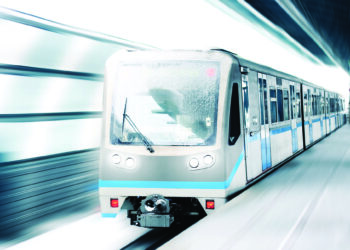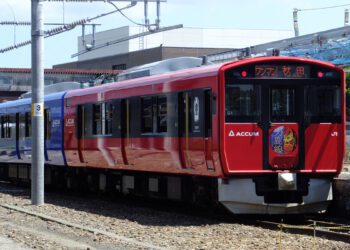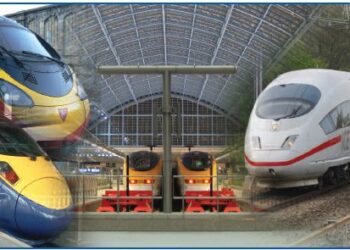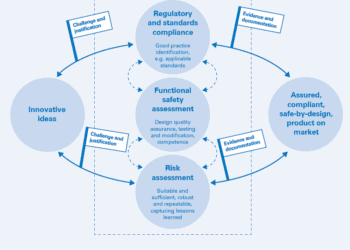Accessibility in the Rail Industry
The railway industry has a rich history of improving safety performance through lessons learnt and design innovation. However, with an ageing global population and inclusive societal expectations, how can we ensure that the railway environment is both safe and accessible for all; and that key considerations for accessibility are considered as part of the risk assessment process?

INTRODUCTION
Railways have been providing transport for the masses for almost two hundred years. Historically, railway design focused on increased efficiency, capacity and safety performance. However, as society becomes ever-more inclusive, passengers now expect public transport to be accessible to all, regardless of age or disability. This in turn has led to diversity and inclusion increasingly becoming a mandatory requirement for railway projects.
Accessibility can relate to many things, from the design of train stations to the choice of materials. Regulations and innovative solutions inform the creation of a more inclusive environment for every passenger, and early consideration of accessibility needs can ensure that they are accurately captured and addressed.
A SAFE FOUNDATION
The Common Safety Method for Risk Evaluation and Assessment (CSM-RA) establishes a common mandatory risk management process and is triggered by technical, operational or organisational changes which impact the safety of the mainline railway within Europe (including the UK). Large-scale projects such as the introduction of new, more accessible rolling stock or the redevelopment of a station to provide level access would, therefore, be required to follow CSM-RA. The regulation provides a consistent approach to system safety management, while ensuring that levels of safety are maintained or even improved where reasonably practicable.
One of the foundations underpinning CSM-RA is the application of Risk Acceptance Principles (RAPs) to derive safety requirements, which are legal safety targets that the project must meet. This approach means that the design takes into account how the system is operated and maintained, ultimately ensuring that people (including those with accessibility requirements) can safely interact with the system. By complying with explicit safety requirements, we can demonstrate that the level of risk associated with the change has been controlled to an acceptable level.
The three RAPs are:
- Application of Codes of Practice – application of standards which are widely used and accepted within the rail industry. This can include European, national or company standards.
- Comparison with a Similar Reference System – a system which is proven in use within the rail industry and has an acceptable safety level. The system in question must have similar functions, environmental conditions and interfaces.
- Undertaking an Explicit Risk Estimation – Where Codes of Practice or Similar Reference Systems cannot be used to fully control the level of risk, an Explicit Risk Estimation must be employed. The extent of the risk assessment (either qualitative or quantitative) should be proportional to the level of risk.
CODES OF PRACTICE
When it comes to consideration of accessibility, the key EU code of practice governing accessibility design for publicly-accessible infrastructure and passenger rolling stock is the Persons with Reduced Mobility Technical Specification for Interoperability (PRM TSI) (also known as PRM National Technical Specification Notice in the UK).
In the UK, for example, the Department for Transport (DfT) has published a code of practice for the design of accessible railway stations, providing guidance on inclusive railway design. The code is currently under review and is to be updated, showing that the landscape for accessibility is rapidly changing.
These codes of practice define the features required for new or upgraded infrastructure to make journeys easier for people with accessibility requirements. Level access, lifts and accessible toilet facilities are well understood; however, some perhaps lesser known requirements include:
- Low reflecting properties for floors and walls, as well as markings on glass surfaces to mitigate slips, trips and falls, particularly for those with visual impairments
- Audibility levels of public address systems, including consideration of volume, location of speakers and sound reverberation on solid surfaces, to ensure that all passengers can hear emergency announcements and safely evacuate
- Tactile and contrasting surfaces on platforms to mitigate the risk of people with visual impairments from being struck by a train or falling onto the track
- Lighting uniformity and lux levels, as well as the avoidance of flashing lights, shadows and dark areas. This acts to reduce slips, trips and falls in both normal and emergency scenarios, particularly for those with visual or cognitive impairments. Emergency lighting levels are also key for evacuation.
- Provision of level access for all escape routes or the installation of evacuation-compliant lifts. Additionally refuges can be provided to give extra minutes for evacuation.
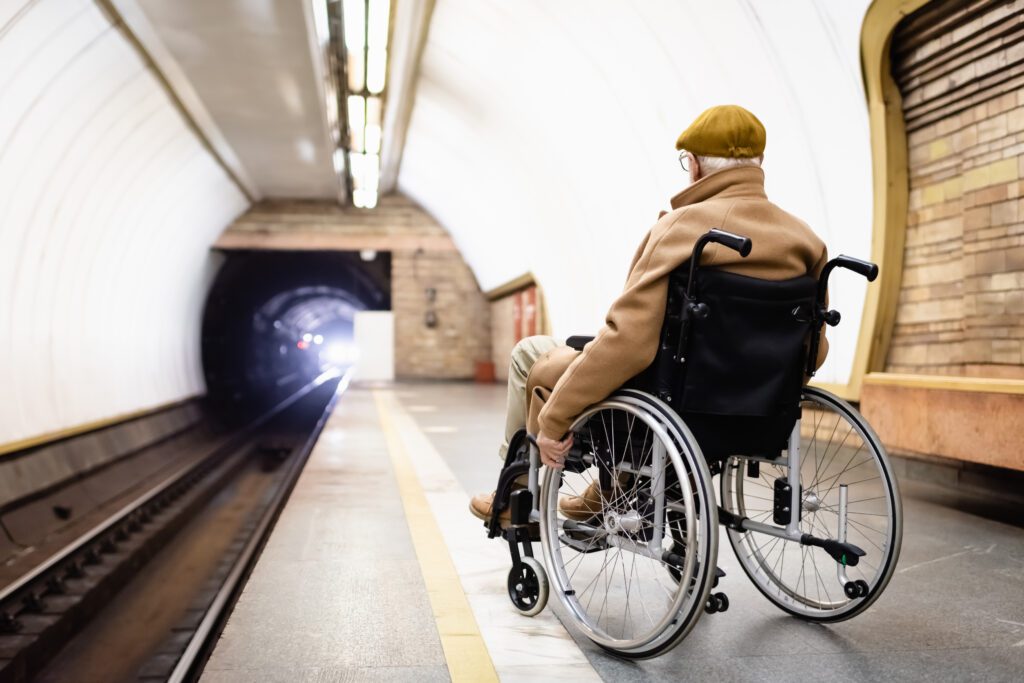
INTEGRATED RISK ASSESSMENT
When following the CSM-RA process, cognisance of the PRM TSI (Code of Practice) can enable requirements to be considered within the standard risk assessment process. This helps informed decisions to be made early on in a project that consider safety risks as well as ensuring compliance with the PRM TSI, rather than considering accessibility as a separate issue or late addition. Although accessibility can be addressed through the application of codes of practice, there may be additional complexities when upgrading existing assets. Where CSM-RA principles require an explicit risk estimation to be undertaken, consideration of accessibility can inform the method and parameters to be assessed. For example, bespoke people flow modelling can consider the predicted behaviour of passengers with luggage or infrequent users who are unfamiliar with rail travel, including during emergency scenarios. From this modelling, we can derive the safety requirements which may include improved signage to clearly define level access walking and evacuation routes or relocation of information screens to influence people movement and dwell areas.
COLLABORATIVE APPROACH
Although good design may act to break down the barriers to accessibility, collaboration and consultation also have a part to play.
Since 2017, community rail partners, train companies and charities have been working together to make to make travel on the Bentham Line in the north of England easier and safer for those living with dementia. Initiatives proposed by the group include staff awareness training, improved clarity of information and signage, and the development of dementia friendly walks starting from train stations (Ref. 1)
CONCLUSION
With an ageing global population, it is more important than ever for the rail industry to make improvements to ensure that the railways are safe and accessible for all.
By understanding the safety risks posed to those with accessibility requirements at an early stage, suitable controls to manage the level of risk to an acceptable level can be implemented in an integrated manner.
References

